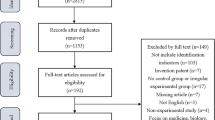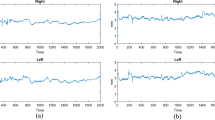Abstract
Autism Spectrum Disorder (ASD) is a complex neurodevelopmental condition with varying degrees of severity. Early diagnosis and classification of autism severity are crucial for personalized intervention and support. This study proposes a novel approach using image processing techniques to analyze facial features and eye gaze patterns to differentiate between mild, moderate, and severe autism cases. A comprehensive dataset comprising facial videos and images of individuals aged 2 to 12 years with ASD was collected, along with normally develo** children. Features such as facial asymmetry is calculated using SIFT feature, eye size, inter-eye distance, and eye openness were extracted for both groups using canny and adaptive thresholding techniques. Support Vector Machine (SVM) classifiers were employed to classify autism cases into three severity levels. Results revealed that eye gaze patterns were significantly lower for autism cases and higher for severe cases. Facial asymmetry was higher for autism cases, showing greater deviations from mild to severe cases. Severe autism cases exhibited extreme stiffness in facial muscle control, leading to the absence of facial expressions. Additionally, inter-eye distance increased, and eye openness decreased for severe autism cases. The proposed method demonstrates promising discrimination performance, as evidenced by high accuracy of 98.70 and sensitivity and specificity of 100 and 97.30. This research contributes valuable insights into the potential use of image processing techniques for early autism diagnosis and effective severity classification.






Similar content being viewed by others
Data availability
(data transparency): Data available on request from the authors.
Code availability
(software application or custom code): software application.
References
Lord C, Elsabbagh M (2018) Gillian Baird, and Jeremy Veenstra-Vanderweele. Autism spectrum disorder. The lancet 392, no. 10146 : 508–520
/MNH/215/E, WHO-EM (2019) Autism spectrum disorders. World Health Organization. Regional Office for the Eastern Mediterranean
Leekam SR, Margot R, Prior (2011) Restricted and repetitive behaviors in autism spectrum disorders: a review of research in the last decade. Psychol Bull 137(4):562
Moree BN, Thompson E, Davis III (2010) Cognitive-behavioral therapy for anxiety in children diagnosed with autism spectrum disorders: modification trends. Res Autism Spectr Disorders 4(3):346–354
Adams C, Lockton E, Freed J, Gaile J, Earl G, McBean K, Nash M, Green J (2012) The Social Communication Intervention Project: a randomized controlled trial of the effectiveness of speech and language therapy for school-age children who have pragmatic and social communication problems with or without autism spectrum disorder. Int J Lang Communication Disorders 47(3):233–244
Miller-Kuhaneck (2010) Heather, and Renee Watling. Autism: A comprehensive occupational therapy approach
Akpan VA, Joshua B (2021) Agbogun. Facial image feature extraction using radial basis function neural network and adaptive SIFT-SURF algorithm
Min-Allah N, Jan F, Alrashed S (2021) Pupil detection schemes in human eye: a review. Multimedia Syst 27(4):753–777
Rong W, Li Z, Zhang W (2014) and Lining Sun. An improved CANNY edge detection algorithm. In 2014 IEEE international conference on mechatronics and automation, pp. 577–582. IEEE
Ridha JA, and Jamila Harbi Saud (2020). Iris segmentation approach based on adaptive threshold valuecircular hough transform. In 2020 International Conference on Computer ScienceSoftware Engineering (CSASE), pp. 32–37. IEEE
Luyster R, Gotham K, Guthrie W, Coffing M, Petrak R, Pierce K, Bishop S et al (2009) The Autism Diagnostic Observation schedule—Toddler Module: a new module of a standardized diagnostic measure for autism spectrum disorders. J Autism Dev Disord 39:1305–1320
Becker MM, Mário B, Wagner CA, Bosa C, Schmidt D, Longo C, Papaleo, Rudimar S (2012) Riesgo. Translation and validation of Autism Diagnostic Interview-Revised (ADI-R) for autism diagnosis in Brazil. Arquivos de Neuro-psiquiatria 70 : 185–190
Vahia VN (2013) Diagnostic and statistical manual of mental disorders 5: a quick glance. Indian J Psychiatry 55(3):220
Noland RM, Robin L (2004) Gabriels. Screening and identifying children with autism spectrum disorders in the public school system: the development of a model process. J Autism Dev Disord 34:265–277
Wong V, Yu Y, Keyes ML (2017) McGrew. Pre-diagnostic and diagnostic stages of autism spectrum disorder: a parent perspective. Child Care Pract 23(2):195–217
Thomas M, Chandran A (2018) Artificial neural network for diagnosing autism spectrum disorder. In 2nd International Conference on Trends in Electronics and Informatics (ICOEI), pp. 930–933. IEEE, 2018
Arumugam S, Ram SG, Karuppasamy S, Gowr O, Manoj, Kalaivani K (2021) A deep convolutional neural network based detection system for autism spectrum disorder in facial images. In 2021 Fifth International Conference on I-SMAC (IoT in Social, Mobile, Analytics and Cloud)(I-SMAC), pp. 1255–1259. IEEE
Tamilarasi F, Catherine, Shanmugarn J (2020) Evaluation of autism classification using machine learning techniques. In 2020 Third International Conference on Smart Systems and Inventive Technology (ICSSIT), pp. 757–761. IEEE
Khan N, Ahmed M, Ajmal Sawand M, Qadeer A, Owais (2017) Sarah Junaid, and Phunparah Shahnawaz. Autism detection using computer vision. Int J Comput Sci Netw Secur (IJCSNS) 17(4):256
Song C, Jiang Z-Q, Li L-FHW-H, Liu X-L, Wang Y-Y, ** W-Y, Zhu Z-W (2022) A machine learning-based diagnostic model for children with autism spectrum disorders complicated with intellectual disability. Front Psychiatry 13:993077
Ahmed I, Abdulrab EM, Senan TH, Rassem, Mohammed AH, Ali (2022) Hamzeh Salameh Ahmad Shatnawi, Salwa Mutahar Alwazer, and Mohammed Alshahrani. Eye tracking-based diagnosis and early detection of autism spectrum disorder using machine learning and deep learning techniques. Electronics 11(4)530
Funding
No.
Author information
Authors and Affiliations
Corresponding author
Ethics declarations
Conflicts of interest
We have no conflicts of interest to disclose.
Additional information
Publisher’s Note
Springer Nature remains neutral with regard to jurisdictional claims in published maps and institutional affiliations.
Rights and permissions
Springer Nature or its licensor (e.g. a society or other partner) holds exclusive rights to this article under a publishing agreement with the author(s) or other rightsholder(s); author self-archiving of the accepted manuscript version of this article is solely governed by the terms of such publishing agreement and applicable law.
About this article
Cite this article
Jiji, G.W. Classification of autism severity levels using facial features and eye gaze patterns. Multimed Tools Appl (2024). https://doi.org/10.1007/s11042-024-19494-0
Received:
Revised:
Accepted:
Published:
DOI: https://doi.org/10.1007/s11042-024-19494-0




